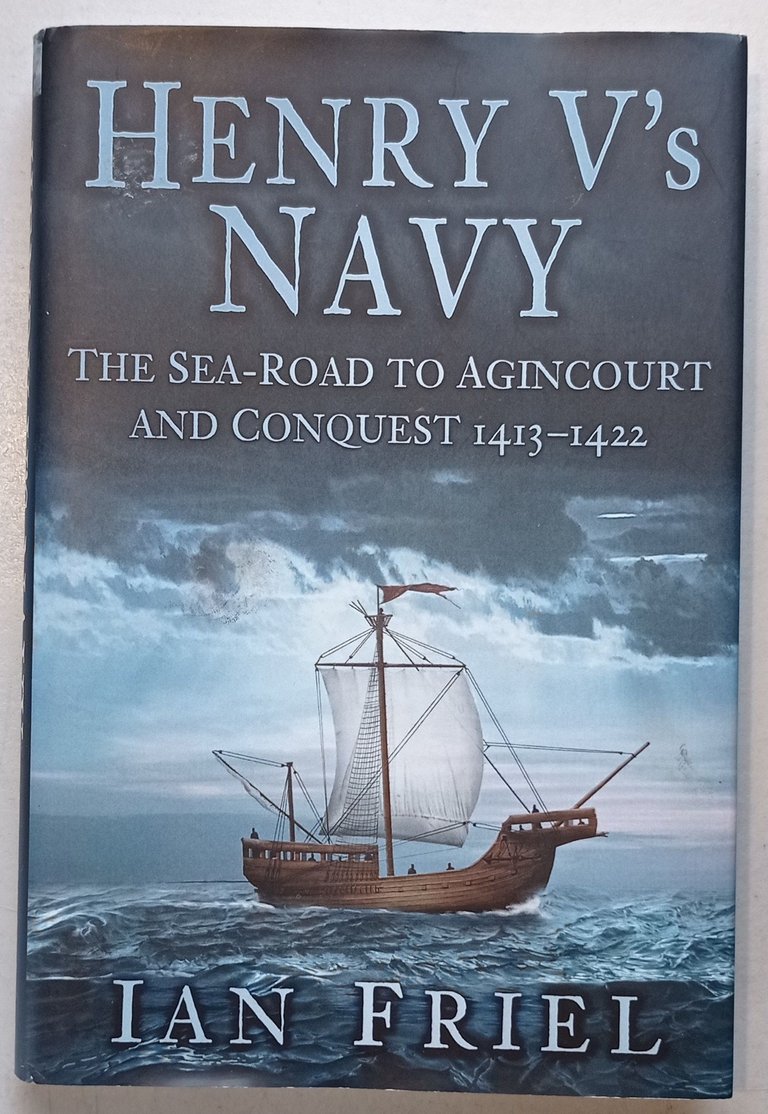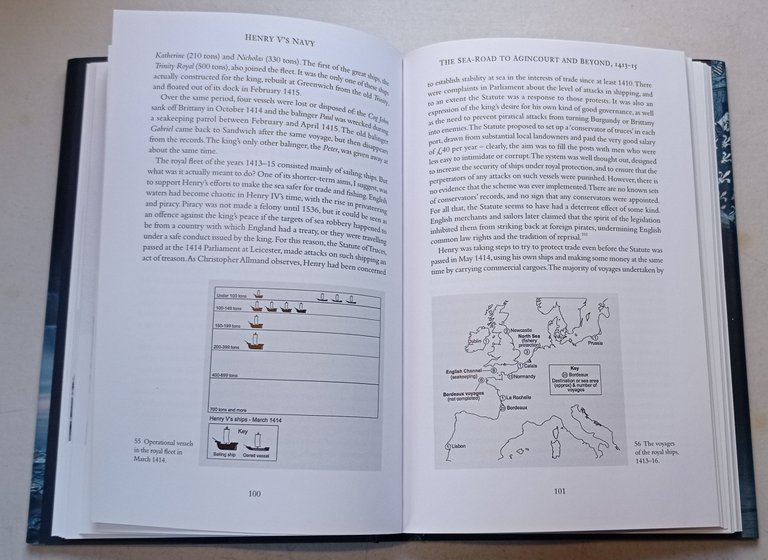Book Review - Henry V's Navy, by Ian Friel
Naval history has always been one of my interests. Stories of dashing sea battles make for good reading, but what I find most fascinating is how the ships were designed and constructed, and how navies are organised, trained and supplied. They are such complex organisations !
As an active Dungeons & Dragons gamer, I also look for books on obscure subjects like this as a great inspiration for ways to put more credible detail into my homebrew fantasy setting.
There are plenty of books about navies from the 17th Century onwards, but very little that's accessible has been published about ancient and medieval navies. The choice is normally between very dry academic research papers, or a page or two within more general histories.
So when I spotted this book in a local charity shop, how could I resist buying it ?
The navy of Henry V was what allowed him to mount his campaigns in France during the Hundred Years' War. They also made sure that most of the fighting was in France rather than England 😉 Although it deteriorated and mostly disappeared after his death, it taught some useful lessons that were remembered when Henry VI and VIII created the Tudor navy.

Photo by me, of my copy of the book

The book is a slim hardback with 223 pages, published in 2015. From page 158 onward it is taken up with bibliography, notes, appendices and index. There are also 8 pages of colour plates, and the book is well illustrated throughout with black and white plates, maps and diagrams.
The first two appendices are actually fascinating, as they contain a list of all the known shipmasters and ships in Henry V's navy. The bibliography and notes maybe less so, unless you're using this book as the start of a serious course of study.
The author clearly knows his subject, and although it's a relatively short text the density of interesting information is very high. It outlines the growth of the fleet, how it was organised and manned, how it was used, and it's rapid decline once it was no longer needed.
Of the nine chapters in the book, the first five deal with the beginnings of the navy, how it fitted into the wider context, how it was crewed, and the ships and supplies used. Chapters 6 to 8 cover the actual history, with details of the ships built or taken into service and the key events.
The author does a good job throughout the book of showing that Henry V's navy had some very rough edges and issues to overcome, because it was such a learning process. It was the first time since the reign of Alfred the Great that an attempt had been made to create a truly "Royal" navy. Edward III's fleet at Sluys 70 years earlier was almost entirely made up of merchant vessels co-opted for an incredibly short time. Henry V was trying to create a personal navy from the ground up to act as a more professional core for the impressed merchant vessels.
If I have one criticism of this book, it's that a couple of the chapters could have stuck more closely to their themes. They're still full of fascinating information, but at times it feels a little like a random data dump of anything interesting that wouldn't fit neatly anywhere else !

Photo by me - opened to a random page. I think this falls in fair use, but if anyone thinks it's an IP breach, drop me a note in comments and I'll delete it.
Overall, I'd say this is a very readable book, making a subject which is poorly covered elsewhere nicely accessible to casual historians. It's useful to already have a broad understanding of the events of the time and historical context, because the book is by no means dumbed down, but I found it enjoyable enough to read that when I got to the end I immediately started at the beginning again just so I could pick up on any interesting anecdotes I'd missed.
Thoroughly recommended !

As an aside, it turns out that the remains of one of Henry's largest ships, the Grace Dieu still exists. The lower hull is buried in the mud on the west bank of the River Hamble, about a mile upstream of the village of Bursledon. Apparently, it is just visible during the lowest tides.... I might just have to study some tide tables and make a visit....
It's also possible that the even more deteriorated remains of the Holigost (or Holy Ghost) are a short distance further downstream, but very little archaeology has been done yet to confirm this.
I've only taken interest for the navy and naval stuff after playing Civ 6 haha. Seems like it's an interesting book!
Thank you ! I haven't played Civilisation for years 😀 It was a great game back then, and I'm sure the most recent version is a massive upgrade. I really should give it another go !
I found out about the game just a few month ago and loved it. I am not sure with the older version but the newest version is pretty fun too & definitely you should give it a go. Was there nuclear war in the old version as well?
Interesting! Though I'm not too familiar in this part of history, I like ships (ww2 navy to be specific), and the way you described this book seemed intriguing!
Thank you ! I find the obscure, poorly documented parts of naval history are often the most fascinating, because they are the experimental phases that lay the groundwork for the famous bits 😀